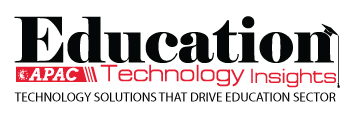THANK YOU FOR SUBSCRIBING
Be first to read the latest tech news, Industry Leader's Insights, and CIO interviews of medium and large enterprises exclusively from Education Technology Insights
Teaching Assessment for Student Inclusivity and Outcomes
Dr Lucian Tipi, Associate Dean Teaching, Education and Student Experience, Birmingham City University
 Dr Lucian Tipi, Associate Dean Teaching, Education and Student Experience, Birmingham City University
Dr Lucian Tipi, Associate Dean Teaching, Education and Student Experience, Birmingham City UniversityIn case anybody has missed it – here it is: the top priority for OfS and any UK HE institution is student outcomes. This can be further broken down into two main categories: employability and/or further study. A prerequisite for both of these is academic achievement – the grades on your transcript matter in the context in which an increasing number of people have a degree. But how are the grades achieved by students? Through their summative assessments, of course, particularly important being the assessments in terminal years.
As part of my Associate Dean role, student outcomes are, of course, at the top of my agenda. The logical statements above made me think quite hard about something that might sound obvious now – but are we doing it? To put it simply – are we doing all we can to ensure that our students are best placed to succeed in their assessments?
A cursory examination of HE academic practice gives an unequivocal answer to this question: No. Looking at schedules of teaching, we see plenty of time dedicated to teaching the technical subject matter but little, if any, time dedicated to teaching our assessment packages. So, the question then is this: are we expecting our very diverse students to understand assessments just on the basis of a brief (I’ll come back to this point a little later) and perhaps a screencast and a 20-minute in-class introduction? I would like to propose that we need to do better.
I would like to propose that we need an in-depth and deliberate approach to teaching assessment with the same enthusiasm as we do our subject matter.
Let's start with assessment briefs: how long should these be? In my recent practice, I have come across examples of briefs that were 12, 25, and 42 pages long. That’s not all – some assessment briefs are written in a style that would make any academic journal editor proud – dense and full of jargon. I think that by taking this approach, it is unrealistic to expect students to be able to cope. Assessment briefs need to be just that and free of any unnecessary jargon – I suggest no more than three pages long.
“I would like to propose that we need an in-depth and deliberate approach to teaching assessment with the same enthusiasm as we do our subject matter”
So now that we’ve got our briefs, the job is done? I don’t think so; there is a job of work to make sure that students get it. There seems to be a gap between what we teach students in their weekly sessions and how that might be translated into actual assessment. This is not a gap that can be filled by a one-off activity. The weekly schedule of teaching must include dedicated time in each session that allows for explicit links to the student’s assessment tasks to be made. After all, students could ask quite rightly: what is the point of teaching the subject matter if it bears no relation to their assessment?
Furthermore, the assessment criteria may be easily understood by academics, not so by students. These criteria need to be broken down for students and put in the context of the subject matter being taught to them. Again, this needs to be a process better started from the beginning of the teaching schedule as part of the weekly activity.
Students are individuals with different educational backgrounds and styles of learning. Understanding how one can support students at the individual level with their assessment journey requires time. This time is only realistically available in the taught sessions. A dedicated assessment session might be just the vehicle to get that individual time with your students and plot their own path to assessment success.
One element remains to be discussed. All of the teacher’s and student’s hard work comes to nothing if the assessment is not actually submitted. Taking students through the process of submitting the assessment, however familiar you think they are, is a must. Don’t fall down at the last hurdle!
Assessment is not going away any time soon – we need to get better at helping our students get it right the first time. As with everything, this can be best achieved through making sure that teaching assessment is part of our practice!
Read Also
Empowering Educators through Purposeful, Connected and Transformative Learning
Empowering Students to Lead: A New Vision for Civic Learning
The Director's Playbook: Strategic Digital Transformation in Rual Hyper-Growth Districts
The Art and Architecture of Student Support
From At-Risk to At-Promise: The Language Revolution Higher Education Needs
Teaching Tomorrow: How Western Governors University Is Redefining Teacher Preparation

I agree We use cookies on this website to enhance your user experience. By clicking any link on this page you are giving your consent for us to set cookies. More info

However, if you would like to share the information in this article, you may use the link below:
www.educationtechnologyinsightsapac.com/cxoinsights/dr-lucian-tipi-nid-3246.html




















